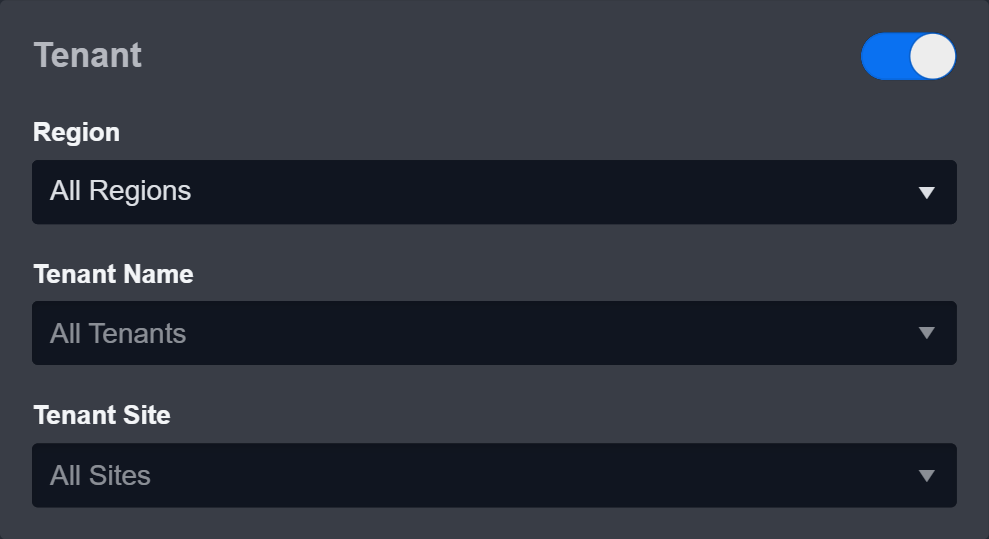HashiCorp Vault
LAST UPDATED: APR 11, 2025
Overview
Manage Secrets and Protect Sensitive Data.
D3 SOAR is providing REST operations to function with HashiCorp Vault.
HashiCorp Vault is available for use in:
D3 SOAR | V14.0.283 |
Category | Credential Management |
Deployment Options |
Connection
To connect to HashiCorp Vault from D3 SOAR, please follow this part to collect the required information below:
Parameter | Description | Example |
Server URL (domain level) | The domain-level Server URL of HashiCorp Vault. | 1.1.1.1 |
API Token | The API Token obtained from HashiCorp Vault. | *** |
API Version | The API Version. | v1 |
Configuring HashiCorp Vault to Work with D3 SOAR
Please refer to Tokens | Vault | HashiCorp Developer for more information about the API token.
Configuring D3 SOAR to Work with HashiCorp Vault
Log in to D3 SOAR.
Find the HashiCorp Vault integration.
.png?inst-v=9d16beaf-952a-4ae4-8fe8-e35f7a3745da)
Navigate to Configuration on the top header menu.
Click on the Integration icon on the left sidebar.
Type HashiCorp Vault in the search box to find the integration, then click it to select it.
Click + Connection, on the right side of the Connections section. A new connection window will appear.
Configure the following fields to create a connection to HashiCorp Vault.
.png?inst-v=9d16beaf-952a-4ae4-8fe8-e35f7a3745da)
Connection Name: The desired name for the connection.
Site: Specifies the site to use the integration connection. Use the drop-down menu to select the site. The Share to Internal Sites option enables all sites defined as internal sites to use the connection. Selecting a specific site will only enable that site to use the connection.
Recipient site for events from connections Shared to Internal Sites: This field appears if you selected Share to Internal Sites for Site to let you select the internal site to deploy the integration connection.
Agent Name (Optional): Specifies the proxy agent required to build the connection. Use the dropdown menu to select the proxy agent from a list of previously configured proxy agents.
Description (Optional): Add your desired description for the connection.
Tenant (Optional): When configuring the connection from a master tenant site, you have the option to choose the specific tenant sites you want to share the connection with. Once you enable this setting, you can filter and select the desired tenant sites from the dropdowns to share the connection.

Configure User Permissions: Defines which users have access to the connection.
Active: Check the tick box to ensure the connection is available for use.
.png?inst-v=9d16beaf-952a-4ae4-8fe8-e35f7a3745da)
System: This section contains the parameters defined specifically for the integration. These parameters must be configured to create the integration connection.
1. Input the Server URL.
2. Copy the API Token from the HashiCorp Vault platform.
3. Input the API Version. The default value is v1.
Enable Password Vault: An optional feature that allows users to take the stored credentials from their own password vault. Please refer to the password vault connection guide if needed.
Test the connection.
Click Test Connection to verify the account credentials and network connection. If the Test Connection Passed alert window appears, the test connection is successful. You will see Passed with a green checkmark appear beside the Test Connection button. If the test connection fails, please check your connection parameters and try again.
Click OK to close the alert window.
Click + Add to create and add the configured connection.
Commands
HashiCorp Vault includes the following executable commands for users to set up schedules or create playbook workflows. With the Test Command, you can execute these commands independently for playbook troubleshooting.
Integration API Note
For more information about the HashiCorp Vault API, please refer to the HashiCorp Vault API reference.
Fetch Credentials
Retrieves credentials by the provided path.
READER NOTE
To determine a path, select an engine first, then add a "/" followed by your secret. For instance, if your engine name is "D3security" and your secret is for "Cybereason", your path should be "D3security/Cybereason".
Input
Input Parameter | Required/Optional | Description | Example |
Path | Required | The path of the secret to read. Please use an existing item path from your HashiCorp Secrets Engines. | D3security/Cybereason |
Output
Error Handling
If the Return Data is Failed, an Error tab will appear in the Test Result window.
The error tab contains the details responded from D3 SOAR or third-party API calls, including Failure Indicator, Status Code, and Message. This can help you locate the root cause of a command failure.
Parts in Error | Description | Example |
Failure Indicator | Indicates the command failure that happened at a specific input and/or API call. | Fetch Credentials failed. |
Status Code | The response code issued by the third-party API server or the D3 SOAR system that can be used to locate the corresponding error category. For example, if the returned status code is 401, the selected connection is unauthorized to run the command. The user or system support would need to check the permission setting in the HashiCorp Vault portal. Refer to the HTTP Status Code Registry for details. | Status Code: 404. |
Message | The raw data or captured key error message from the integration API server about the API request failure. | Message: Path not found. |
Error Sample Data Fetch Credentials failed. Status Code: 404. Message: Path not found. |
